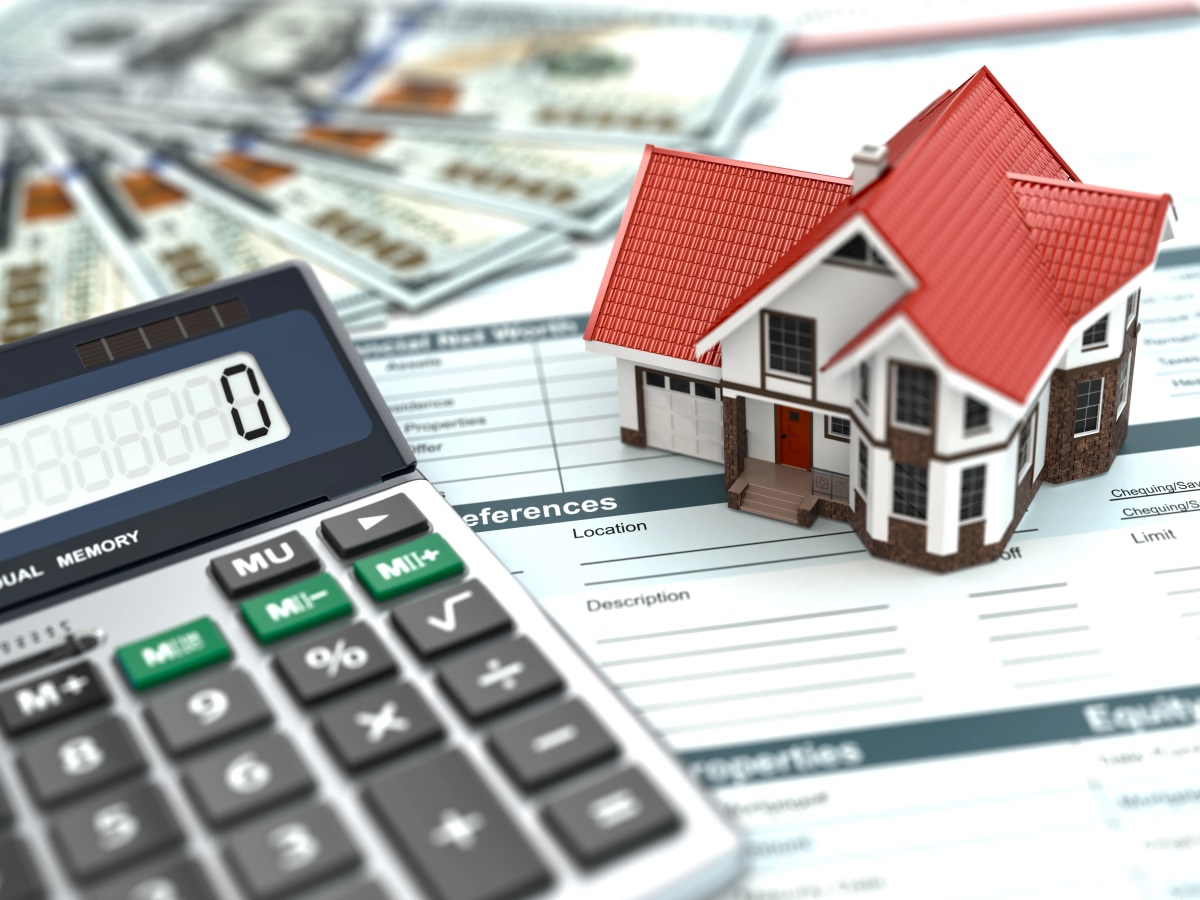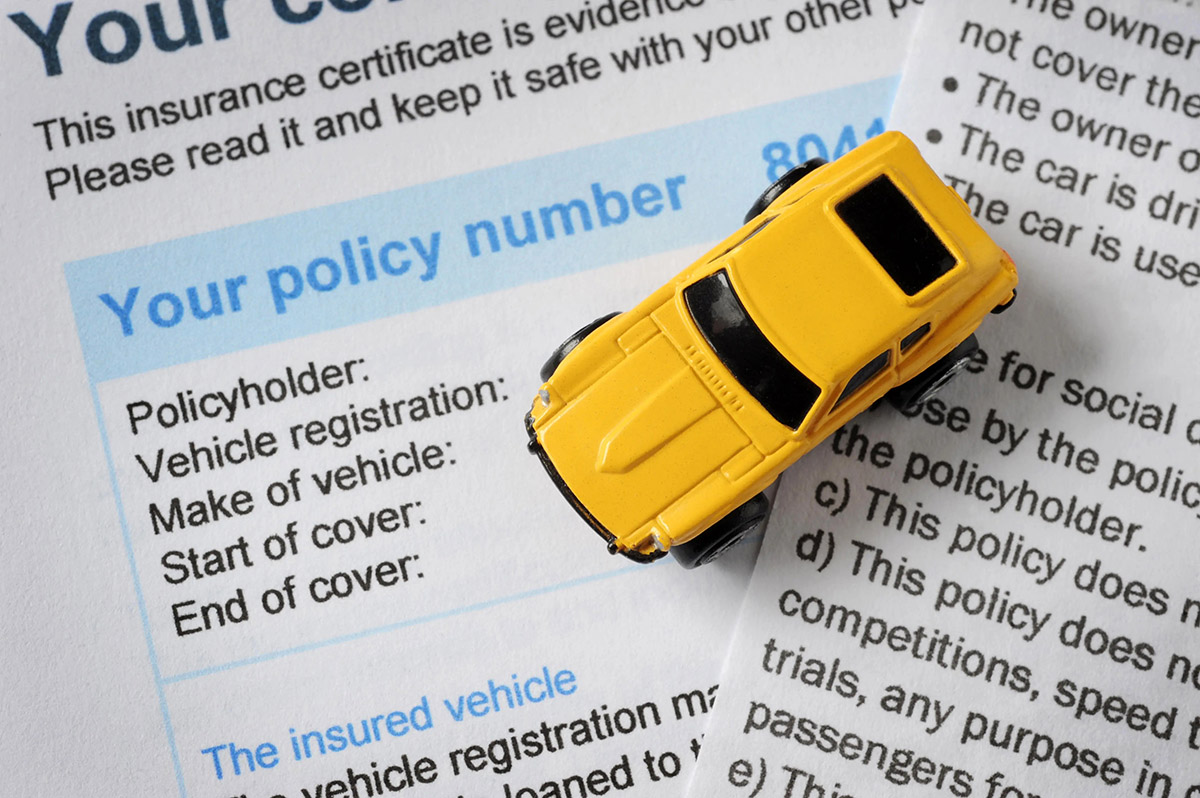Home>Finance>How Soon Can You Apply For Credit After Filing Chapter 13


Finance
How Soon Can You Apply For Credit After Filing Chapter 13
Modified: March 1, 2024
Learn about the credit application process after filing for Chapter 13 bankruptcy. Understand when you can start applying for financial opportunities.
(Many of the links in this article redirect to a specific reviewed product. Your purchase of these products through affiliate links helps to generate commission for LiveWell, at no extra cost. Learn more)
Table of Contents
- Introduction
- What is Chapter 13 Bankruptcy?
- How Long Does Chapter 13 Bankruptcy Last?
- The Effects of Chapter 13 Bankruptcy on Credit
- How Soon Can You Apply for Credit After Filing Chapter 13?
- Factors That May Affect Your Ability to Obtain Credit
- Rebuilding Your Credit After Chapter 13 Bankruptcy
- Tips for Successfully Applying for Credit After Chapter 13 Bankruptcy
- Conclusion
Introduction
Chapter 13 bankruptcy can be a viable solution for individuals who are struggling with overwhelming debt and are looking for a way to regain control of their finances. While filing for Chapter 13 bankruptcy provides a structured repayment plan, it is essential to understand the implications it has on your credit and future financial opportunities.
One of the questions that commonly arise after filing for Chapter 13 bankruptcy is how soon one can apply for credit again. After all, rebuilding credit is an essential step toward restoring financial stability.
In this article, we will explore the timeline for applying for credit after filing Chapter 13 bankruptcy, as well as the factors that may affect your ability to obtain credit. We will also provide tips for rebuilding your credit and successfully applying for credit in the aftermath of Chapter 13 bankruptcy.
While the process of rebuilding credit after Chapter 13 bankruptcy may require time and effort, it is certainly achievable. By following the right steps and making responsible financial decisions, individuals can improve their creditworthiness and restore their financial health.
What is Chapter 13 Bankruptcy?
Chapter 13 bankruptcy, also known as a wage earner’s plan, is a type of bankruptcy filing available to individuals with a regular income. Unlike Chapter 7 bankruptcy, which involves liquidating assets to pay off debts, Chapter 13 bankruptcy allows individuals to establish a repayment plan that spans over a period of three to five years.
Under Chapter 13 bankruptcy, individuals work with a bankruptcy trustee to create a manageable repayment plan. The amount of debt to be repaid will depend on factors such as income, living expenses, and the value of assets.
Unlike Chapter 7 bankruptcy, Chapter 13 bankruptcy does not require individuals to sell their assets. Instead, the debtor proposes a repayment plan to the bankruptcy court, which outlines the timeline and amounts to be paid to each creditor. This allows individuals to retain their assets, such as their home or car, while still addressing their debt obligations.
During the repayment period, individuals make regular payments to the bankruptcy trustee, who then distributes the funds to the creditors according to the agreed-upon plan. Once the repayment period is complete, any remaining eligible debts may be discharged, providing a fresh start for the individual.
Chapter 13 bankruptcy can be an attractive option for individuals who have a regular income and want to repay their debts without the risk of losing their assets. By offering a structured repayment plan, Chapter 13 bankruptcy allows individuals to regain control of their financial situation and work towards a debt-free future.
How Long Does Chapter 13 Bankruptcy Last?
The duration of a Chapter 13 bankruptcy case can vary depending on various factors, but the typical repayment period lasts between three to five years. The length of the repayment plan is determined by the debtor’s disposable income, which is the amount of money available after necessary living expenses are deducted.
In general, individuals with higher disposable income may have a shorter repayment period, while those with lower disposable income may require a longer repayment period to meet their obligations. The bankruptcy court will review the individual’s financial situation and approve a plan that ensures a fair repayment structure.
It’s important to note that completing the repayment plan is crucial for obtaining a discharge of eligible debts at the end of the Chapter 13 bankruptcy case. Failing to complete the proposed repayment plan may result in the case being dismissed, leaving the individual responsible for their remaining debts.
During the repayment period, individuals must make regular payments to the bankruptcy trustee, who will distribute the funds to the creditors according to the approved plan. It’s essential to stay committed to the repayment plan and make timely payments to ensure a successful bankruptcy case.
Once the repayment plan is successfully completed, the individual may be eligible for a discharge of remaining qualifying debts. This discharge provides a fresh start and relief from the financial burden of those debts, allowing individuals to move forward with a more stable financial foundation.
It’s important to consult with a bankruptcy attorney to understand the specific details and duration of a Chapter 13 bankruptcy case based on individual circumstances. They can provide guidance and support throughout the process, ensuring a smoother journey towards financial recovery.
The Effects of Chapter 13 Bankruptcy on Credit
Filing for Chapter 13 bankruptcy will have a significant impact on your credit. It is crucial to understand how this process affects your creditworthiness and future financial opportunities.
Chapter 13 bankruptcy will remain on your credit report for a period of up to seven years from the filing date. This negative mark can make it challenging to obtain new credit or secure favorable terms for loans during that time.
While Chapter 13 bankruptcy does have a negative impact on your credit score, it may not be as severe as other forms of bankruptcy, such as Chapter 7. This is because Chapter 13 involves a structured repayment plan, demonstrating a commitment to repaying your debts.
However, it’s important to note that not all creditors will view Chapter 13 bankruptcy in the same light. Some lenders may still be hesitant to extend credit to individuals with a bankruptcy record, while others may be more willing to extend credit based on the progress made in the repayment plan.
As time progresses and you continue to make regular payments and successfully complete the repayment plan, the negative impact of Chapter 13 bankruptcy on your credit score may gradually diminish. It is essential to consistently demonstrate responsible financial behavior during and after the bankruptcy process.
It’s worth noting that while Chapter 13 bankruptcy may affect your ability to obtain new credit, it does not prevent you from starting to rebuild your credit. With careful planning and financial management, you can take steps to improve your creditworthiness over time.
Remember, rebuilding credit after bankruptcy is a gradual process that requires patience and persistence. By following responsible financial practices, such as making timely payments, limiting new debt, and monitoring your credit report, you can begin to rebuild your credit score and open up new opportunities for future financial success.
How Soon Can You Apply for Credit After Filing Chapter 13?
After filing for Chapter 13 bankruptcy, many individuals wonder how soon they can apply for credit again. While there is no set waiting period, it is possible to start applying for credit soon after filing Chapter 13, but the availability and terms of credit may be limited.
Typically, individuals will need to wait until their Chapter 13 bankruptcy case is discharged before their credit options begin to expand. The discharge marks the successful completion of the repayment plan and the elimination of eligible debts. It is usually granted after three to five years, depending on the agreed-upon repayment period.
Even before the discharge, some lenders may be willing to extend credit to individuals who have filed for Chapter 13 bankruptcy. However, the terms and interest rates offered may be less favorable, reflecting the higher risk associated with lending to someone with a bankruptcy history.
It’s important to carefully consider whether you truly need credit immediately after filing for Chapter 13 bankruptcy. Taking on additional debt too soon can hinder your progress in rebuilding your financial health. However, if you need to obtain credit, it’s crucial to approach it responsibly and cautiously.
One option is to apply for a secured credit card, where you provide a cash deposit as collateral. This type of credit card is often easier to qualify for, even with a bankruptcy history. By making timely payments and keeping your credit utilization low, you can gradually improve your credit score over time.
Another option is to explore credit-building loans offered by community banks or credit unions. These loans are designed specifically to help individuals rebuild their credit after bankruptcy. Making regular payments on these loans can demonstrate responsible financial behavior and help improve your creditworthiness.
Regardless of when you choose to apply for credit after filing Chapter 13 bankruptcy, it’s important to carefully review the terms and conditions. Avoid lenders who prey on individuals in financially vulnerable situations and be cautious of high-interest rates and excessive fees.
Remember, patience is key in rebuilding your credit after Chapter 13 bankruptcy. By making responsible financial decisions, staying consistent with payments, and demonstrating good financial habits, you can gradually improve your creditworthiness and regain access to more favorable credit options in the future.
Factors That May Affect Your Ability to Obtain Credit
While it is possible to obtain credit after filing for Chapter 13 bankruptcy, several factors may impact your ability to secure credit and the terms you receive. It’s important to be aware of these factors as you navigate the post-bankruptcy credit landscape:
- Credit Score: Your credit score plays a significant role in determining your creditworthiness. Following bankruptcy, your credit score may have been negatively impacted. Lenders may view individuals with a bankruptcy history as higher risk, which could result in limited credit options or higher interest rates.
- Income and Employment Stability: Lenders want assurance that you have the financial means to repay any credit extended to you. Demonstrating a stable income and employment history can increase your chances of obtaining credit, as it showcases your ability to meet financial obligations.
- Debt-to-Income Ratio: Lenders assess your debt-to-income ratio to evaluate your ability to take on additional debt responsibly. A lower debt-to-income ratio, where your monthly debt payments are a smaller percentage of your income, can improve your chances of obtaining credit.
- Payment History: Lenders will review your payment history, including your behavior during and after bankruptcy. Consistently making on-time payments and avoiding further negative marks on your credit report can demonstrate responsible financial behavior and improve your creditworthiness.
- Length of Time Since Bankruptcy: The length of time since your bankruptcy was discharged can also impact your ability to obtain credit. As time passes and you demonstrate responsible financial behavior, lenders may be more willing to extend credit with more favorable terms.
- Available Collateral: Providing collateral, such as a car or a home, can improve your chances of obtaining secured credit. Lenders may be more willing to extend credit when they have assets to secure against the loan, reducing their overall risk.
It’s important to note that each lender has their own criteria and lending standards, so the impact of these factors may vary. It’s wise to shop around and compare options from different lenders to find the best terms available to you.
Rebuilding your credit after bankruptcy takes time and effort. As you work on improving your financial situation and demonstrating responsible financial behavior, your ability to obtain credit and secure more favorable terms will gradually increase.
Rebuilding Your Credit After Chapter 13 Bankruptcy
Rebuilding your credit after Chapter 13 bankruptcy is a crucial step towards regaining financial stability. While the process may take time, the following strategies can help you rebuild your credit score:
- Monitor Your Credit Report: Regularly check your credit report to ensure its accuracy and identify any errors or discrepancies. Dispute any inaccuracies and work towards resolving them promptly.
- Make Timely Payments: Pay all your bills, including loans, credit cards, and utilities, on time. Late or missed payments can have a negative impact on your credit score. Set up automatic payments or reminders to help you stay on track.
- Keep Your Credit Utilization Low: Aim to keep your credit card balances below 30% of your available credit. High credit utilization can indicate a reliance on credit and may negatively affect your creditworthiness.
- Apply for a Secured Credit Card: Consider applying for a secured credit card, where you provide a cash deposit as collateral. Use it responsibly, make timely payments, and keep your balance low. Gradually, you can improve your credit score and move towards obtaining unsecured credit.
- Build a Positive Payment History: Establishing a positive payment history is crucial. If you have existing loans or credit cards, consistently make on-time payments and avoid incurring any additional late payments or defaults.
- Consider a Credit-Builder Loan: Credit-builder loans are specifically designed to help individuals rebuild their credit. These loans are typically offered by credit unions or community banks. Making regular payments on a credit-builder loan can demonstrate responsible financial behavior and boost your creditworthiness.
- Practice Responsible Financial Habits: Stick to a budget, live within your means, and avoid taking on unnecessary debt. By practicing responsible financial habits, you can rebuild your credit while also securing a more stable financial future.
- Seek Professional Financial Assistance: It may be beneficial to consult with a credit counselor or a reputable financial advisor who can provide guidance on rebuilding credit after bankruptcy. They can help you create a personalized strategy and offer valuable advice for managing your finances.
Remember, rebuilding your credit takes time and patience. It’s crucial to remain diligent, practice responsible financial habits, and monitor your progress along the way. Over time, with consistent effort, you can see improvements in your credit score and regain your financial footing.
Tips for Successfully Applying for Credit After Chapter 13 Bankruptcy
Applying for credit after Chapter 13 bankruptcy requires careful planning and consideration. Here are some tips to help you navigate the process and increase your chances of success:
- Give Yourself Time: It’s important to allow yourself some time to rebuild your credit before applying for new credit. Focus on improving your credit score and demonstrating responsible financial behavior. Waiting at least six months to a year after your bankruptcy discharge can give you a better chance of obtaining favorable credit terms.
- Start Small: When applying for credit after bankruptcy, it’s a good idea to start with small credit limits. Applying for a credit card with a low limit or a small personal loan can increase your approval chances while minimizing risk. Use these credit options responsibly to rebuild your creditworthiness.
- Research Credit Options: Take the time to research lenders and credit products that are more lenient towards individuals with a bankruptcy history. Some financial institutions specialize in providing credit to those in post-bankruptcy situations, offering better approval rates and terms.
- Consider Secured Credit: Secured credit cards or loans can be instrumental in rebuilding credit after bankruptcy. By providing collateral or making a deposit, you can demonstrate your commitment to responsible credit management. Make regular payments and keep your balances low to improve your credit score over time.
- Apply Sparingly: Avoid submitting multiple credit applications all at once, as it can negatively impact your credit score. Each application generates a hard inquiry, which can lower your credit score temporarily. Be selective in choosing credit opportunities that align with your financial goals and needs.
- Review Your Credit Report: Before applying for new credit, carefully review your credit report to ensure its accuracy and make any necessary corrections. Addressing any errors or discrepancies can boost your chances of credit approval and improve your overall creditworthiness.
- Build a Positive Payment History: Consistently make on-time payments for all your financial obligations, including loans, credit cards, and utility bills. Your payment history is a crucial component of your credit score and showcases your commitment to managing credit responsibly.
- Showcase Stability: Lenders prefer borrowers who demonstrate stability in their income and employment. Maintain a steady source of income and, if possible, try to stay with the same employer for an extended period. Stability can improve your creditworthiness and give lenders confidence in your ability to repay debts.
Remember, the key to successfully applying for credit after Chapter 13 bankruptcy is to proceed with caution, be patient, and prioritize responsible financial behavior. As you gradually rebuild your credit, you can open up new doors to financial opportunities and work towards achieving your long-term financial goals.
Conclusion
Filing for Chapter 13 bankruptcy can be an effective way for individuals to address their overwhelming debt and work towards financial stability. While the process may have certain implications on credit, it is essential to understand that it is not the end of the road. Rebuilding credit after Chapter 13 bankruptcy is entirely possible with patience, persistence, and responsible financial habits.
Throughout this article, we’ve explored the timeline for applying for credit after filing Chapter 13 bankruptcy and the factors that may affect your ability to obtain credit. We’ve also provided tips for successfully rebuilding your credit and applying for credit in a responsible manner.
Remember, the journey to rebuild credit after bankruptcy takes time. Utilize strategies such as monitoring your credit report, making timely payments, keeping your credit utilization low, and considering secured credit options to gradually improve your creditworthiness.
It’s important to remain patient and not rush into taking on new debt immediately after bankruptcy. Focus on demonstrating responsible financial behavior, practicing good money management habits, and giving yourself time to rebuild your credit score.
Lastly, consult with a bankruptcy attorney or a financial advisor who can offer guidance and support on your journey to rebuild credit. They can provide personalized advice based on your unique circumstances and help you make informed financial decisions.
Rebuilding credit after Chapter 13 bankruptcy is a process that requires determination and consistency. By following the tips and strategies outlined in this article, you can work towards improving your creditworthiness, achieving financial health, and opening up new opportunities for a brighter future.














